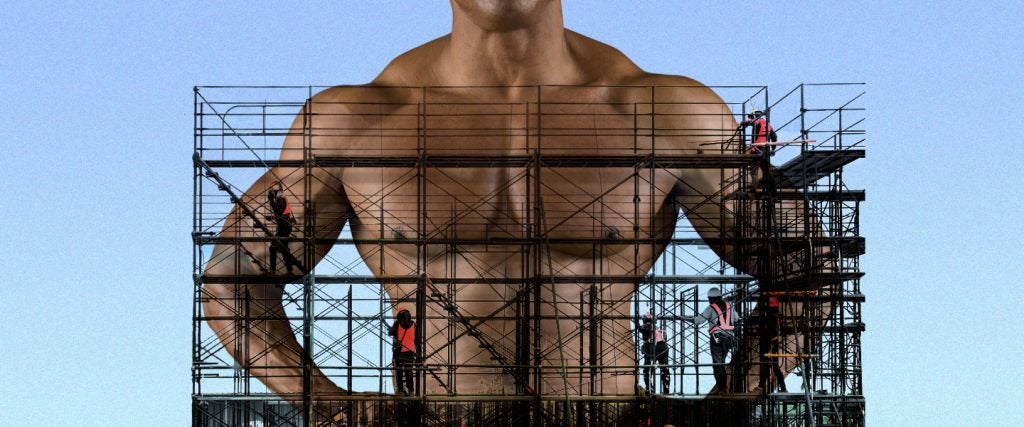Weight-training results can seem like one of the most inherently unfair areas in life because two people working the same muscles in the exact same way with the same intensity are almost always still going to achieve very different results. This is because individual genetics — from muscle type, to muscle length, to bone length, among several other factors — play such an outsized role in determining physical outcomes.
Case in point: The Road Warriors, arguably the greatest main-event tag team in the history of professional wrestling. Hawk and Animal traveled, trained and ate together from an early point in their careers, and the consensus is that Animal was undeniably the stronger of the two men while Hawk was the more aesthetically pleasing, with his upper traps particularly eye-popping.
All of which is to say, despite nearly identical methods of training, they still ended up with completely different physiques.
Is that true? Is there no one group of muscles that always grows the fastest?
Speaking very generally, the largest muscle groups in the body tend to respond the quickest to training in terms of their development. This makes sense because they’re the easiest muscles to overload with heavy weights. Here, we’re usually talking about the glutes, quads and hamstrings in the legs, followed by the chest and the back, usually in that order.
Another thing that’s important to mention is something that should be obvious, yet still typically manages to escape notice: It’s impossible to naturally grow relatively small muscles like those in the arm to bodybuilder dimensions without simultaneously assembling powerful sets of muscles all over your body. It’s for this very reason that Popeye looks so ridiculous — no one would be able to enter the cheat code for forearm growth while bypassing growth in every muscle the forearm ties into (and every muscle that those muscles need to plug themselves into).
On the other hand, you’ve also never seen someone with massive chest and back muscles who had very tiny arms. Your arms are inextricably involved in virtually every exercise required for building both of those muscle groups. This often means that your secondary muscles, like the shoulders, biceps and triceps, will need to play catch-up in order to match the growth of your larger muscles.
This is a big reason why bicep training is often paired with back training, and tricep training is often grafted onto the end of chest day. Since you’ve already provided your triceps with a substantial workout during all of your push-ups, bench presses and bodyweight dips, it creates an ideal opportunity to fully isolate those muscles and extract every last scintilla of effort from them. Not only will this strengthen them and add to their contribution during large lifts later on, but it will also help to fill them out.
Okay, but are you sure you can’t just name one muscle group that grows the fastest?
I can, but again, I’d be speaking very generally.
Nuance and hedging aside, though, the legs are the easiest muscles to initiate growth in for most people. Even if you broke them down separately, the glutes, quads and hamstrings would still be three of the five largest muscle groups in the body by most measurements, and they’re very easy to overload with hundreds of pounds through popular closed-chain exercises like the squat and deadlift. In fact, many people with ostensibly small legs have still managed to work their way into 1,000-pound territory on the leg press after only a few months of training.
So there you have it: If you want a leg up on building muscle quickly, your future is gonna be filled with a whole lotta leg days.

